Watering fruit trees in general and apple trees in particular has many features and depends on various factors. Many gardeners do not attach much importance to the event, especially when the trees are large, believing that they themselves can obtain water due to the deep penetration of the roots into the soil, and in the summer the rainfall is enough for them.Meanwhile, the growth and durability of the apple tree, as well as the quantity and quality of the harvest, depend on the frequency of watering.
| Content:
|
|
Most often, trees need to be watered in spring and early summer. |
Apple tree water needs
The apple tree requires water throughout the growing season, but the amount the tree consumes varies depending on the season and the condition of the apple tree.
- The period of bud break. At this time, there is enough moisture in the ground, and the tree’s need for it is small. But the situation is very dangerous when the weather is warm and sunny, the snow has melted quickly, and the ground is still frozen. The buds that begin to bloom experience an acute shortage of water, since the roots are not yet working, and the apple tree experiences tissue dehydration. This situation is especially dangerous for young trees. In such a situation, the tree is urgently watered with hot water around the perimeter of the crown. Fortunately, this happens extremely rarely.
- Flowering period. All fruit trees are in great need of water. Its availability affects the number of ovaries.
- The period of shoot growth is in June. The highest water requirement for apple trees requires frequent watering, since both shoot growth and fruit filling occur simultaneously.
- Second half of summer. The need for water is high. In July-August, active fruit growth continues, and in addition, all branches thicken and form wood.
- Autumn (September). The fruiting of autumn and winter varieties continues. After harvesting, summer varieties prepare for winter, and the wood begins to ripen. A large amount of moisture is required.
- October November. Preparing autumn and winter varieties for winter.The need for moisture is reduced, but it is still needed in minimal quantities.
This shows that apple trees need a lot of moisture throughout the season.
What can you plant under apple trees?
To ensure sufficient moisture supply, the tree trunk circles are not tinned, but are either kept in their pure form, or vegetables or flowers are grown in them. Then the problem of regular watering of the apple tree becomes not so acute, there will be enough for the flower-vegetables and the apple tree will get enough. Growing cucumbers in a circle around the trunk is well suited: abundant and frequent watering and fertilizing have a beneficial effect on the tree. Cabbage grows well under young apple trees (under the crown of an adult tree it will be too dark and it won’t set a head).
|
The trunks of apple trees can be used as beds for many types of vegetables. |
Just don’t plant potatoes and, in the southern regions, watermelons and melons under the crown. The sucking power of their roots is such that they can pull all the moisture out of the soil, so that the apple tree gets nothing. Flowers from the Ranunculaceae family are also not grown in the crown. Their root secretions depress even an adult apple tree.
Features of watering apple trees
The frequency of watering apple trees depends on many conditions:
- soil type;
- climatic conditions;
- weather in a particular year;
- age of the tree;
- tall apple tree;
- productivity;
- and much more...
In general, soil moisture should be 70-75% at the level of sucking roots. And this depth ranges from 40-60 cm for dwarf apple trees, to 1.5-2.5 m for tall trees. Of course, no one will drill the ground every time and take samples from the required depth. There is a deep reserve of moisture in the soil, but it is depleted, especially in hot and dry summers.
Watering is carried out with settled warm water. The roots do not absorb too cold or warm water, especially in summer.In spring and autumn, the water should not be icy, so water from artesian wells is settled. When watering with ice water from a well in the summer, after 1-3 days yellowing of the leaves and falling off of the ovaries and fruits are observed.
Watering is carried out in the evening, since moisture loss due to evaporation is reduced, and the soil is better saturated with moisture.
How often to water apple trees
The amount and volume of watering may vary during the season depending on precipitation. In humid summers, you can do 1-2 waterings in June and at the end of summer. If there has been no or little precipitation, you will have to water it. Summer showers do not provide moisture to the apple tree. They do not wet the soil, and moisture quickly evaporates from its surface. Therefore, even if there are rainfalls every day, you will still have to water the trees, since water is needed at the level of the sucking roots, i.e. at a depth of 0.4-2.5 m (depending on height).
|
Apple trees are badly affected by sudden changes in soil moisture, so they need to be watered regularly to avoid drying out or waterlogging. |
For an apple tree, it is more suitable not for frequent watering in small portions, but for several abundant waterings during the period of growth and fruiting.
Irrigation rates
Irrigation rates depending on soil type vary greatly.
- On clay soil and heavy loams, 7-8 buckets of water per tree. During the summer, 1-2 waterings are carried out in the absence of precipitation.
- On loams 6-7 buckets. Do 3-5 waterings per season depending on the weather.
- On sandy loam there are 4-5 buckets. During the season, 4-7 waterings are carried out.
The heavier the soil, the less frequently but more abundantly it needs to be watered. Conversely, light soils require more frequent and shallow watering, since such soil does not retain moisture well.
If the groundwater in the area is shallow (1.5-2 m), then watering is not done, since groundwater moistens the lower soil horizons. The roots, as a rule, reach these waters and supply their water needs from them. Such apple trees tolerate any drought well. Often they do not require watering at all, even in the hottest summer.
If the groundwater is deeper (more than 2.3 m), then the roots grow to it, but watering is still necessary, since the bulk of the sucking roots are located at a depth of 40-150 cm. On such soils (especially if they are heavy clay soils ) watering is reduced. If irrigation water meets groundwater, waterlogging occurs, and this leads to rotting of the roots. In this situation, only 2 waterings are done: during the flowering period and in the second half of summer (during drought). But if the soils are light, then watering is necessary.
Autumn water-recharging irrigation
Autumn watering is carried out for summer varieties in September, for autumn and winter varieties in October (in the southern regions it can be done in November). In autumn, the apple tree begins intensive growth of suction roots, plastic substances are deposited, and the wood ripens. Lack of moisture negatively affects their preparation for winter: unripe young shoots freeze slightly even with slight frosts.
Moisture-recharging irrigation is required. It is not carried out if the autumn is rainy and the ground is well saturated with moisture.
Watering methods
Trees are watered in several ways:
- from a hose;
- sprinkling;
- using wells.
Watering apple trees with a hose
The most common type of watering plants. An effective method, but often used incorrectly. The hose should be placed around the perimeter of the crown, moving it from place to place to ensure uniform moistening of the entire perimeter.It makes no sense to water directly at the trunk; there are no suction roots in this zone, and even if the soil here is well soaked, the tree will experience a moisture deficiency.
When watering with a hose, it is undesirable to turn on high pressure, since the stream of water washes away the top fertile layer of soil and forms gullies in the ground, which adversely affects trees and all surrounding crops.
How to water apple trees correctly:
Sprinkling
At dachas, it is not the trees that are watered this way, but usually the regional crops. But for an apple tree this method is much better than hose watering. By sprinkling, you can shed the soil within a radius of 3-10 m (depending on the nozzle). It soaks the soil better, there is less evaporation with this method, and, in addition, it is more economical. Sprinkler irrigation can cover a larger area than hose irrigation.
But when sprinkling, the air humidity around the apple tree increases. In dense plantings, if it is used frequently, fungal diseases can occur both on the apple tree itself and on crops grown in the tree trunk.
Well irrigation
The method is used infrequently, but it is very effective. Using a drill, holes are made along the perimeter of the crown with a depth of 40-50 cm. One hole is made per 1 m2 irrigated area. To prevent its walls from collapsing, they are covered with rubble or sand. During irrigation, water is poured into these wells. Water goes directly to the sucking roots. Wells are also very convenient for feeding with liquid fertilizers.
Watering only the trunk circle does not provide enough water to the sucking roots. The trunk circles are usually small (no more than 1 m in diameter) and there are few sucking roots here. The main suction zone is located at a distance of 2-3 m from the trunk, this is where the sucking roots are located.Therefore, watering the tree trunk circle does not give the desired results.
There are other methods of watering, but they are not used in amateur gardening.
Watering seedlings
Watering seedlings depends on the type of root system.
Saplings with open root system
Apple tree seedlings with an open root system during autumn planting and dry autumn are watered once a week. The first time watering is done immediately after planting. The water consumption rate is 1-3 buckets, depending on the size of the seedling. The next time they water it after 4-5 days, the application rate is the same. Further, the event is held once every 7 days. This is necessary to ensure that the roots are constantly in moist soil. This way the tree will take root faster.
When planting such seedlings in spring, they are watered more often. In spring, precipitation is not enough for seedlings to take root. The first watering is done during planting, the water consumption rate is 2-3 buckets per seedling. The next watering is done 3 days after planting, and then watered every 3-4 days. But here the type of soil is taken into account. If it is clayey, then water the young apple tree once every 10 days; the water consumption rate on such soils is 1-2 buckets per seedling.
|
If the autumn is rainy and the soil is well soaked, then watering is done only at planting. |
If there is heavy rainfall, soaking the soil by 40-60 cm, then watering is reduced to once every 10 days. But they still need to be carried out, since natural moisture is not enough for seedlings (unless there are heavy rains).
When young leaves appear (this means the apple tree has taken root), watering is reduced to once every 10 days (on clay soils - once every 15-20 days). In this mode, the event is held until the end of the growing season. In case of severe drought, water once every 5 days.
Seedlings with a closed root system
Everything is much simpler here. After planting, water the soil well.Then water after 7-10 days (on heavy soils after 10-15 days). Such seedlings take root much faster, therefore, as soon as the apple tree takes root, it is watered once every 10-14 days, the water consumption rate is 2-3 buckets per tree.
|
In the first 1-2 months, apple trees are watered within the trunk circle. But then the irrigation area is increased, as the roots begin to spread wider. |
In spring, there is a sufficient supply of water in the soil, especially in the central regions and to the north. But young seedlings, whose root system is poorly developed, cannot get moisture from great depths. Therefore, they need frequent and abundant watering.
Watering young non-fruiting apple trees
Young non-fruit-bearing trees require less total moisture. They do not spend water on filling fruits, so the mode of its consumption is different than that of fruit-bearing trees.
Watering trees depends entirely on the growing region and weather.
Watering apple trees in spring
In most regions, there is enough moisture in the soil in early spring and additional application is not required. If it rains at this time, this frees the summer resident from spring watering the garden.
In a dry and warm spring, the soil dries out quickly and the trees need to be watered. If the land is very dry, then the event is carried out during the bud break period. In all other cases, after the leaves bloom. Watering is carried out in the evening with settled water, the temperature of which is not lower than 10°C. When watering with cold water from a well, bud opening is delayed for 3-6 days, and the leaves that have already appeared turn yellow. Some of them may fall off, which is very unfavorable for the development of a young apple tree.
If the spring is dry but cold, then you should not water the garden. In such weather, soil moisture remains for a long time and the trees have enough of it.Watering is carried out only if there has been no rain for 6-7 weeks after the snow has completely melted.
Average watering rate:
- for a 3-year-old tree 3-4 buckets;
- 4 year old 5-7 buckets;
- 5 year old 9-10 buckets.
Water strictly around the perimeter of the crown!
Drip watering of apple trees:
Summer watering
At this time, fruit trees are actively growing shoots and need a lot of water. You can avoid watering apple trees only in very humid summers, when the ground is saturated with moisture. But usually summer rains, even the most abundant ones, do not wet the soil to the depth of the roots of fruit trees. Perhaps there is enough moisture for garden crops, but fruit trees experience a deficiency in summer.
The first watering is carried out in early June. The water consumption rate is the same as in spring. Then, until the first ten days of July, apple trees are watered every 2 weeks. And only if the rains soak the soil well, 2 waterings can be done in the summer: at the beginning of intensive shoot growth and in mid-July.
In the second half of summer, the need for water in young apple trees decreases. But this does not mean that they no longer need to be watered. At this time, the process of wood ripening begins, and metabolic processes are somewhat modified.
|
In case of rainy weather and good soil wetting, there is no need to water young apple trees. If there is a lack of moisture, trees are watered in early August. |
How to water young apple trees in the fall
During wet autumn, watering is not required. But if it is dry and warm, then moisture-recharging irrigation is done in mid-late October. If there is light rain, then the irrigation rate is the same as in spring. In the absence of precipitation, the irrigation rate is doubled.
During this period, you can use cold water, but not directly from the well. Its temperature should not be lower than 7-8°C.
Watering calendar for a young garden
- Spring when buds open (if necessary).
- At the beginning of shoot growth - late May - early June (required).
- In mid-June (preferably).
- At the end of June (when the soil dries out).
- In mid-July (required).
- In mid-August (in the absence of precipitation).
- Autumn moisture-recharging watering (required if there is a lack of moisture in the soil).
This is an approximate schedule. Real soil and climatic conditions should always be taken into account.
Watering fruiting apple trees
Fruit-bearing trees need much more water. It is required simultaneously for the growth and ripening of shoots, and for the filling of fruits, and for the laying of new fruit buds. The leaf surface of a fruit-bearing tree is larger than that of a young tree, therefore, evaporation from the surface of the leaves is higher. And maintaining the leaves also requires water. Proper watering in combination with fertilizing reduces the periodicity of fruiting. Apple trees in the year of “rest”, if agricultural practices are carried out correctly, give a good harvest.
If there is a lack of moisture, the apples are small and often uneven. An apple tree sheds excess ovaries and fruits if it does not have enough water. There are exactly as many apples left as the tree can “feed”, but some of them are affected by diseases and pests and fall off. This, of course, is already more than enough, but with proper care, the quality of the harvest increases significantly.
Don't forget to read:
How to care for young apple trees in spring, summer and autumn ⇒
How to care for fruit-bearing apple trees throughout the year ⇒
Watering fruiting apple trees in spring
In the absence of precipitation, the first watering is carried out when the buds open or during the flowering period. Trees are also watered when there is a threat of frost.With severe frost, the color, of course, cannot be saved, but the resistance of the tree itself to negative temperatures during the flowering period increases.
In the south, trees are watered again after flowering, since spring there is usually hot and dry.
Video about watering apple trees in summer:
Summer
Apple trees are watered at the very beginning of June, when the ovaries become the size of a pea. At this time, excess ovaries are shed, which the apple tree cannot feed. Watering reduces ovary drop as the tree suddenly “realizes” that it is able to bear more fruit. This watering is especially necessary for summer varieties, which consume a lot of water during this period.
After 10-12 days, summer varieties are watered again. They experience severe moisture deficiency at this time.
The next watering of summer varieties is carried out at the end of June, autumn and winter varieties - in the first ten days of July.
Next, summer varieties are watered every 10-12 days until the harvest is complete. They are carried out even during heavy summer downpours. After harvesting, the time between events is increased to 15-20 days. During this period, the need for water in summer varieties is greatly reduced. But you still need to water them.
Autumn and winter varieties, after watering common to all varieties during the period of shedding the ovaries, are watered after 15-20 days, and then in mid-July. Further, in the absence of precipitation, water every 10-12 days. The water consumption rate increases: another 2-3 buckets are added to the age of the tree. Of course, 20-year-old trees do not need 23 buckets of water. The maximum water consumption for an apple tree is 10-12 buckets.
|
For summer varieties, the irrigation rate is equal to the number of years of the apple tree plus 3-4 buckets |
Autumn
Summer varieties are watered in mid-September.In late autumn, if the soil is dry, water-recharging irrigation is done.
In case of dry autumn, autumn and winter varieties are watered every 12-15 days. The interval between watering increases compared to summer, because in autumn it is not so hot, evaporation from the surface of the leaves decreases, and, therefore, the tree does not need to restore its water balance as soon as possible. If it rains, there is no need to water the apple trees. Autumn rains moisturize the soil well and there is enough moisture in it. At the end of October, in the absence of precipitation, water-recharging irrigation is done.
Watering calendar for summer varieties
- During the flowering period (if necessary).
- During mass fall of ovaries (required).
- At the beginning of June (required, if the soil is dry).
- In mid-June (required, in case of drought).
- At the end of June (required).
- In the first ten days of July (required even during summer showers).
- In mid-July (required, even during rainfalls; the exception is very wet summers).
- In the first half of August (in the absence of precipitation).
- In early September (preferably in the absence or low intensity of precipitation).
- Moisture-recharging irrigation at the end of October.
Watering calendar for autumn and winter varieties
- At the beginning of flowering (when the soil dries out; in the northern and central regions it is usually not required).
- During the period of ovary fall (required).
- In the second half of June (required).
- In mid-July (required).
- In the first ten days of August (required).
- In the second half of August (in the absence of precipitation).
- At the end of August (in the absence of precipitation).
- In the first half of September (in the absence of precipitation).
- At the end of September (during dry autumn; in the middle zone, as a rule, it is not required due to sufficient rain).
- In the second half of October (if necessary).
- Moisture-recharging irrigation at the end of October (if necessary).
Despite the large number of points in the watering calendar, in reality it is necessary to water apple trees in the middle zone 2-3 times per season, in the south 4-5 times. The rest of the norm is compensated by rains.
Conclusion
Apple trees require a lot of water to fully develop and bear fruit. Particular attention should be paid to watering in the first half of summer and late autumn. If there is no moisture in the soil in the fall, the trees freeze heavily in the winter.
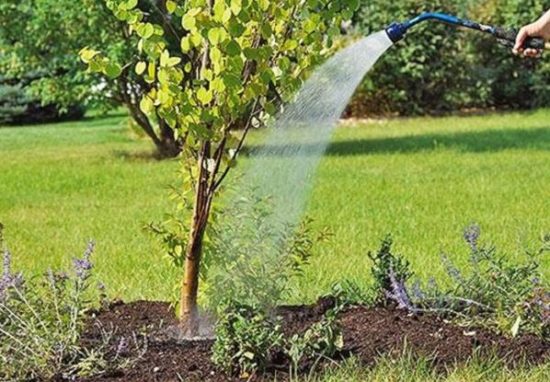
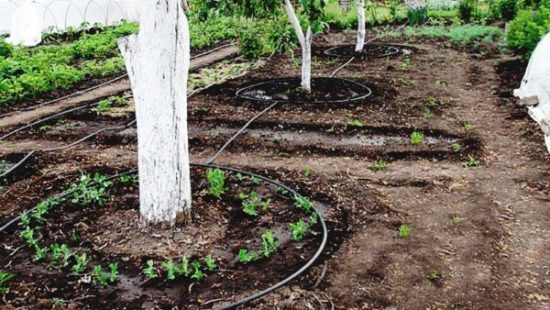
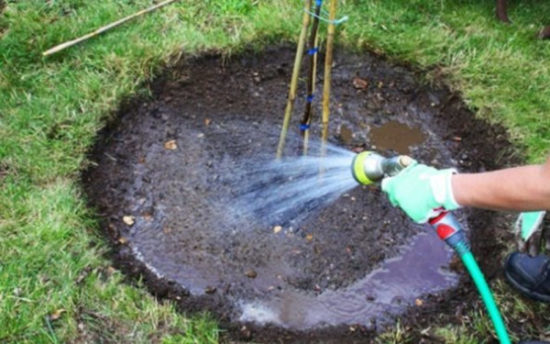


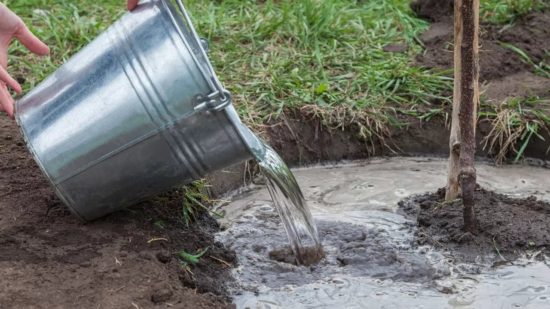
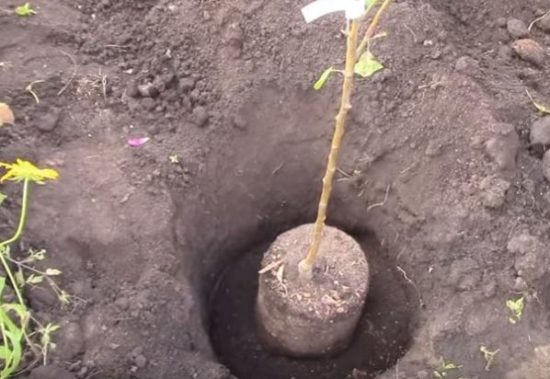
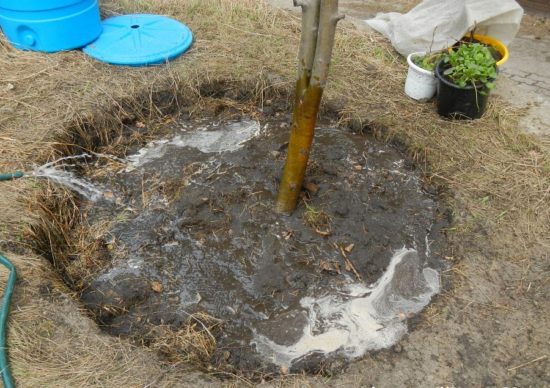
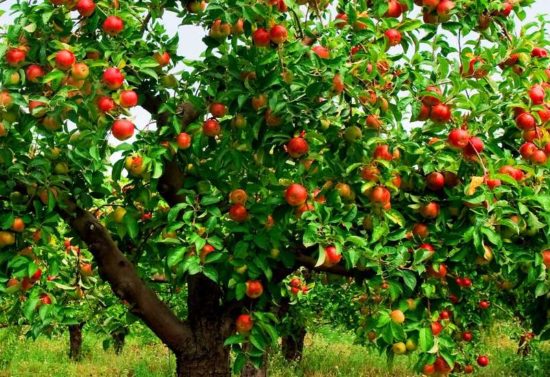

 CUCUMBERS NEVER GET SICK, I'VE BEEN USING ONLY THIS FOR 40 YEARS! I SHARE A SECRET WITH YOU, CUCUMBERS ARE LIKE THE PICTURE!
CUCUMBERS NEVER GET SICK, I'VE BEEN USING ONLY THIS FOR 40 YEARS! I SHARE A SECRET WITH YOU, CUCUMBERS ARE LIKE THE PICTURE! You can dig a bucket of potatoes from each bush. Do you think these are fairy tales? Watch the video
You can dig a bucket of potatoes from each bush. Do you think these are fairy tales? Watch the video
 How our fellow gardeners work in Korea. There is a lot to learn and just fun to watch.
How our fellow gardeners work in Korea. There is a lot to learn and just fun to watch. Eye trainer. The author claims that with daily viewing, vision is restored.They don't charge money for views.
Eye trainer. The author claims that with daily viewing, vision is restored.They don't charge money for views. A 3-ingredient cake recipe in 30 minutes is better than Napoleon. Simple and very tasty.
A 3-ingredient cake recipe in 30 minutes is better than Napoleon. Simple and very tasty. Therapeutic exercises for cervical osteochondrosis. A complete set of exercises.
Therapeutic exercises for cervical osteochondrosis. A complete set of exercises. Which indoor plants match your zodiac sign?
Which indoor plants match your zodiac sign? What about them? Excursion to German dachas.
What about them? Excursion to German dachas.